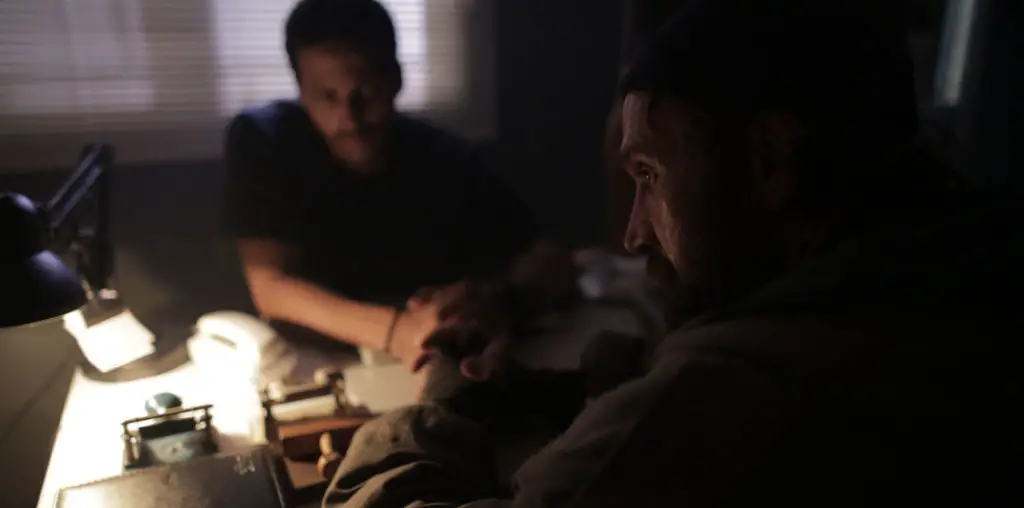
How long did the documentary take to pull together?
I first started working on the project in 2015. Looking back, I realize that the length of time it took was actually crucial to the overall process. An extended production timeline provided ample opportunity for the organic development of a deep and meaningful relationship, which might not have been as profound had I attempted to complete the film in a condensed time frame. Time allowed for the gradual fostering of a meaningful connection with Nathan, and our interactions evolved beyond a mere filmmaker-subject dynamic, transforming into a genuine bond built on mutual respect and shared goals.
Moreover, the extended post-production schedule played a significant role in shaping the final outcome of the film. As both the editor and director of the film, the extended editing schedule allowed for me to develop the story of the film organically. Unfortunately, Nathan passed away in 2019, and his absence presented a profound loss. However, this period of reflection and distance following his passing allowed for a valuable perspective to emerge. It granted me the necessary clarity to effectively craft and tell Nathan’s story with sensitivity and authenticity. I was able to immerse myself in the extensive footage and had the opportunity to revisit the moments shared with Nathan to delve deeper into his stories and gain fresh insights into the significance of his experiences.
What were the conversations and research like prior to actual filming?
The research process for this film happened mostly side by side with the filming process. As I learned more about Nathan’s story from him, I supplemented my understanding of his work with trips to the Library of Congress, the American Jewish Archives in Cincinnati, and other institutions that have large collections of his work.

“…embraced the opportunity to shape the narrative and contribute to the film.”
If you had the chance to do it all over again, what would you have done differently to make the process easier?
Honestly, I’m not sure that there’s anything I would have done differently. In 1973 the National Personnel Records Center suffered a terrible fire, and many of its historical records were lost. Trying to piece together the facts of Nathan’s service after the fire became an organic and critical part of the story. In our quest, we discovered the fragility of memory and the ephemeral nature of historical accounts. The journey of tracking Nathan’s history inspired a sobering realization that highlighted the importance of honoring personal narratives, particularly those that may not fit neatly within the broader historical narrative.
What was your favorite moment while working on the film?
One of the most remarkable aspects of working with Nathan was witnessing his deep investment in the collaborative process of telling his story. Throughout the filming journey, there were numerous instances where Nathan took on the role of “directing the director,” providing invaluable insights and guidance on how to effectively construct the film.
I found these moments both enlightening and inspiring. Nathan’s passion for sharing his story was evident in his proactive involvement, as he eagerly shared his ideas and suggestions on various elements of the film’s creation. His input extended beyond simply recounting his experiences; he genuinely embraced the opportunity to shape the narrative and contribute to the film. Nathan’s active engagement not only added depth to the narrative but also highlighted the power of collaborative storytelling and the importance of honoring the voice of the subject.
How can our audience see Nathan-ism?
Our film is set to make its U.S. premiere at the prestigious San Francisco Jewish Film Festival at the end of July. Following this, the film will be showcased at various film festivals across the United States and Europe throughout the fall and winter seasons before its wider distribution.
In addition to the festival circuit, we are developing a robust impact campaign that will include community and education screenings at universities and institutions that will serve as catalysts for dialogue and reflection. One of the most extraordinary events we have planned is a special screening at Courtroom 600 in Nuremberg, where the original Nuremberg Trials took place between 1945 and 1946. This screening will hold immense symbolic significance as it will bring Nathan’s story full circle, honoring the historical context in which his experiences unfolded. It will be a testament to the enduring power of storytelling and the impact of personal narratives on shaping our understanding of history.



[…] Source link […]